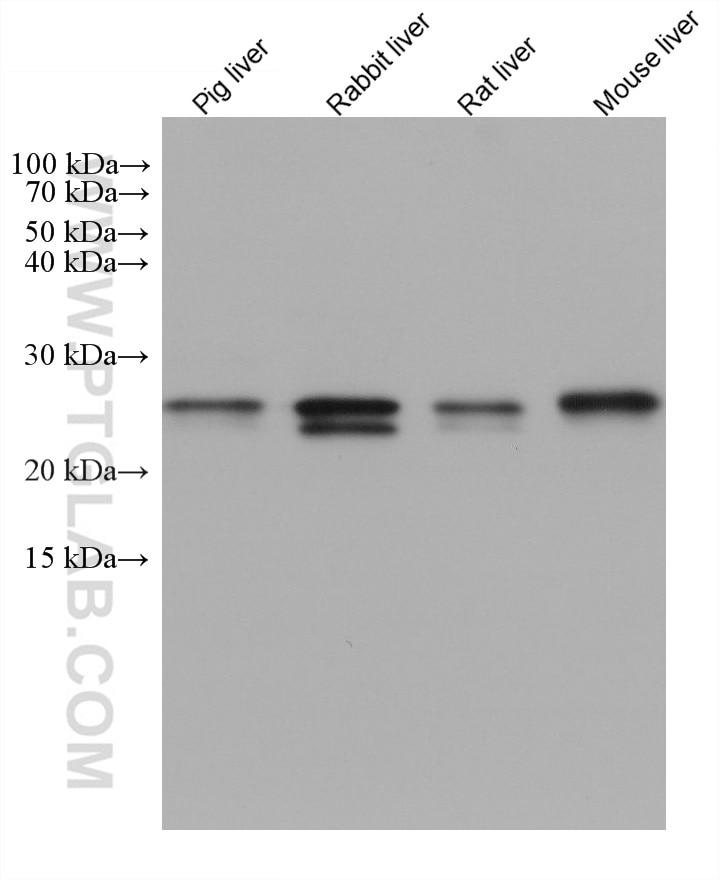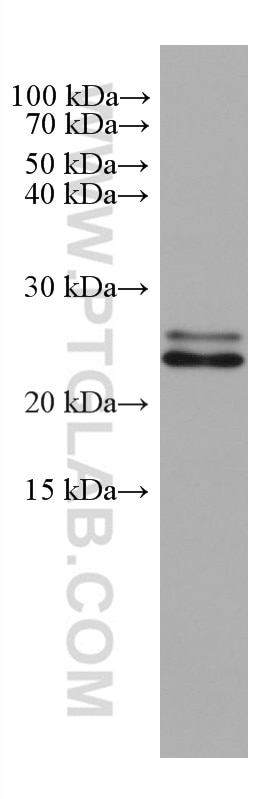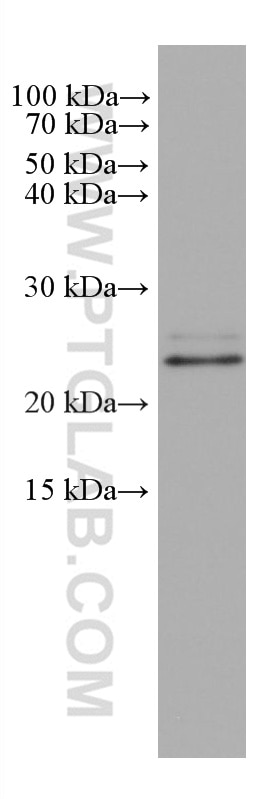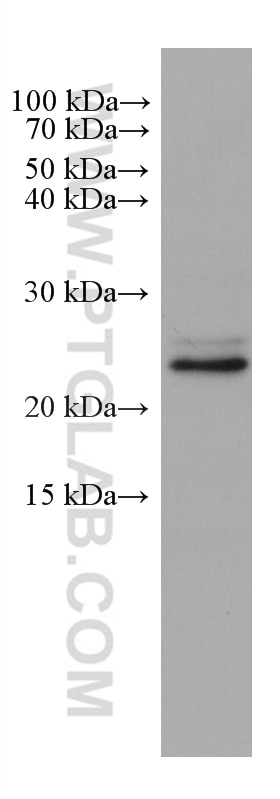SAR1B Monoklonaler Antikörper
SAR1B Monoklonal Antikörper für WB, ELISA
Wirt / Isotyp
Maus / IgG1
Getestete Reaktivität
Hausschwein, human, Kaninchen, Maus, Ratte
Anwendung
WB, ELISA
Konjugation
Unkonjugiert
CloneNo.
1B11A1
Kat-Nr. : 67765-1-Ig
Synonyme
Geprüfte Anwendungen
| Erfolgreiche Detektion in WB | Hausschwein-Lebergewebe, HeLa-Zellen, HepG2-Zellen, L02-Zellen, Mauslebergewebe, Kaninchenlebergewebe, Rattenlebergewebe |
Empfohlene Verdünnung
| Anwendung | Verdünnung |
|---|---|
| Western Blot (WB) | WB : 1:5000-1:10000 |
| It is recommended that this reagent should be titrated in each testing system to obtain optimal results. | |
| Sample-dependent, check data in validation data gallery | |
Produktinformation
67765-1-Ig bindet in WB, ELISA SAR1B und zeigt Reaktivität mit Hausschwein, human, Kaninchen, Maus, Ratten
| Getestete Reaktivität | Hausschwein, human, Kaninchen, Maus, Ratte |
| Wirt / Isotyp | Maus / IgG1 |
| Klonalität | Monoklonal |
| Typ | Antikörper |
| Immunogen | SAR1B fusion protein Ag7718 |
| Vollständiger Name | SAR1 homolog B (S. cerevisiae) |
| Berechnetes Molekulargewicht | 22 kDa |
| Beobachtetes Molekulargewicht | 22-25 kDa |
| GenBank-Zugangsnummer | BC002847 |
| Gene symbol | SAR1B |
| Gene ID (NCBI) | 51128 |
| Konjugation | Unkonjugiert |
| Form | Liquid |
| Reinigungsmethode | Protein-G-Reinigung |
| Lagerungspuffer | PBS with 0.02% sodium azide and 50% glycerol |
| Lagerungsbedingungen | Bei -20℃ lagern. Aliquotieren ist bei -20oC Lagerung nicht notwendig. 20ul Größen enthalten 0,1% BSA. |
Hintergrundinformationen
SAR1B, also named as SARA2, SARB and GTBPB, belongs to the small GTPase superfamily and SAR1 family. It is involved in transport from the endoplasmic reticulum to the Golgi apparatus. SAR1B is activated by the guanine nucleotide exchange factor PREB. It is involved in the selection of the protein cargo and the assembly of the COPII coat complex.
Protokolle
| PRODUKTSPEZIFISCHE PROTOKOLLE | |
|---|---|
| WB protocol for SAR1B antibody 67765-1-Ig | Protokoll herunterladen |
| STANDARD-PROTOKOLLE | |
|---|---|
| Klicken Sie hier, um unsere Standardprotokolle anzuzeigen |





